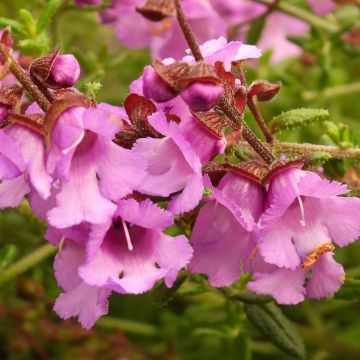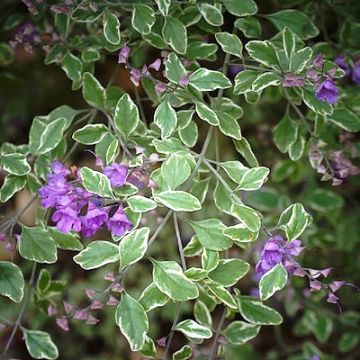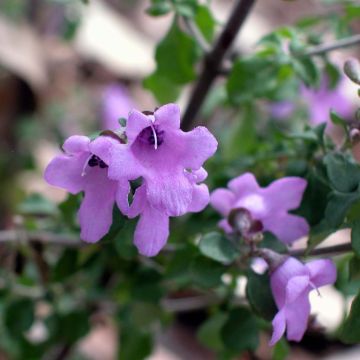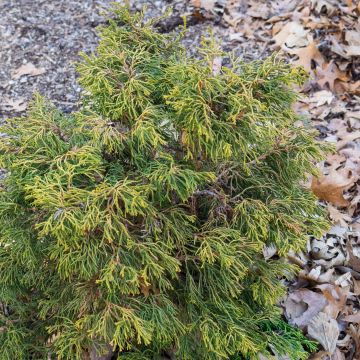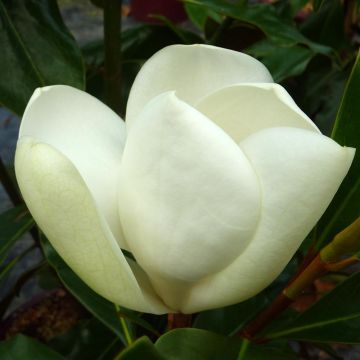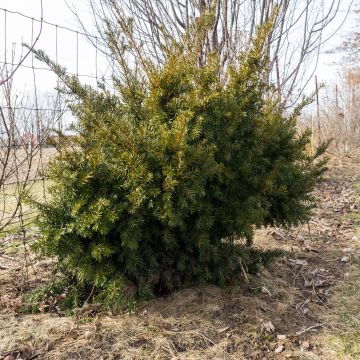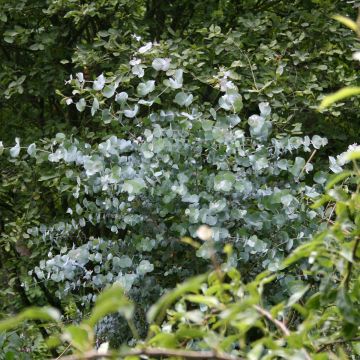Shipping country and language
Your country of residence may be:
Your country of residence is:
For a better user experience on our website, you can select:
Your shipping country:
-
Andorra
-
Austria
-
Belgium
-
Bulgaria
-
Canada
-
Chile
-
Croatia
-
Cyprus
-
Czechia
-
Denmark
-
Estonia
-
Finland
-
France
-
Germany
-
Greece
-
Hungary
-
Iceland
-
Ireland
-
Italy
-
Latvia
-
Lithuania
-
Luxembourg
-
Malta
-
Monaco
-
Netherlands
-
Poland
-
Portugal
-
Romania
-
Slovakia
-
Slovenia
-
Spain
-
Sweden
-
Switzerland
-
United Kingdom
We only deliver seed and bulb products to your country. If you add other products to your basket, they cannot be shipped.
Language:
-
French
-
German
-
Spanish
-
English
-
Italian
My Account
Hello
My wish lists
Log in / Register
Existing customer?
New customer?
Create an account to track your orders, access our customer service and, if you wish, make the most of our upcoming offers.


Prostanthera ovalifolia Variegata - Mint Bush
Prostanthera ovalifolia Variegata - Mint Bush
Prostanthera ovalifolia Variegata
Australian Mint Bush, Variegated thousand-flowered Mint-Bush
Order in the next for dispatch today!
Dispatch by letter from €3.90.
Delivery charge from €5.90 Oversize package delivery charge from €6.90.
Current delivery delay: 2 days.
More information
This item is not available in your country.
Schedule delivery date,
and select date in basket
This plant carries a 24 months recovery warranty
More information
We guarantee the quality of our plants for a full growing cycle, and will replace at our expense any plant that fails to recover under normal climatic and planting conditions.
From €5.90 for pickup delivery and €6.90 for home delivery
Express home delivery from €8.90.
Does this plant fit my garden?
Set up your Plantfit profile →
Description
Prostanthera ovalifolia Variegata, sometimes called Australian Bush Mint due to its origins or Variegated thousand flowered mint-bush for the wonderful colour and fragrance of its foliage, is a frost-tender shrub well adapted to seaside gardens. It forms a rounded but delicate plant, woven with small green-grey leaves edged with cream-white, and becomes spectacular in spring, disappearing under a multitude of small tubular flowers, gathered in blue-purple clusters. With a somewhat indefinable charm, it deserves to be seen and smelled up close and will undoubtedly win over the curious visitor, touched by its sometimes fragile appearance. To successfully grow it in a mild climate, remember that it does not like water in summer, but appreciates partial shade, especially in hot climates; regular watering could kill it as surely as a hard frost!
Prostanthera ovalifolia, which means oval-leaved, is native to eastern Australia, specifically New South Wales and Queensland. It prefers a rather acidic, well-drained soil, and also thrives in oceanic climates, as evidenced by beautiful specimens planted in sheltered positions in some gardens in Cornwall. This highly branched bush has a rounded, slightly spreading habit, supported by slender, square-sectioned, hairy branches. Its growth is quite fast in moist soil, a little slower in dry and poor soil. The lifespan of this plant is about 6 to 8 years, including in its native habitat. An adult specimen will reach an average height of 2.10m (7ft) with a spread of 1.40m. Its evergreen foliage consists of small, simple, opposite, ovate, toothed leaves, measuring 5 to 40mm (1 to 2in) long and 3 to 10mm (1in) wide. They are thick, dark green with a cream margin, but covered with white hairs which give them a more greyish hue, especially in hot and dry climates. When crushed, they release a pleasant menthol scent. The remarkably abundant flowering takes place from April to June, depending on the climate. The small bell-shaped flowers with 5 lobes are grouped in clusters 5 to 7cm (2 to 3in) long. They emerge from reduced leaves on lateral branches. The flower size varies between 0.5 and 1cm (1in) long and its colour is intermediate between light blue-violet and mauve. The fruit is a small almond.
The Variegated Australian Bush Mint is elegant and especially lovely in spring. The shrub is fairly tolerant of soil conditions, tolerates drought quite well, and is not afraid of salt spray. Its only enemy is cold, damp weather, which can make it disappear in temperatures as low as -7°C if the soil is not sufficiently well-drained. It requires little maintenance and even prefers to be forgotten from time to time, especially in summer. A light annual pruning after flowering is more than enough. It will easily thrive in coastal gardens. It makes beautiful hedges, enjoys being against a wall, and stands out in shrub borders. It can be paired with evergreen Melaleucas, Gomphostigma, Leptospermum, and not-too-tall persistent Ceanothus (Italian Skies, Concha, Victoria). Mimosas, Leucophyllum, Raphiolepis, Oleander, Callistemon, or Grevillea can also accompany it in a dry or coastal garden. The choice is vast, it's all a matter of taste. Growing it in a container, allows the shrub to overwinter in a cold greenhouse or a very bright and minimally heated conservatory in very cold regions.
Report an error about the product description
Plant habit
Flowering
Foliage
Botanical data
Prostanthera
ovalifolia
Variegata
Lamiaceae
Australian Mint Bush, Variegated thousand-flowered Mint-Bush
Australia
Other Prostanthera
Planting and care
Prostanthera ovalifolia Varieagata is preferably planted in spring, after the last frost, or in autumn in very mild climates, in a gently sunny position, or even partly shaded position during the hottest hours of the day in hot climates. Afternoon sun can damage its variegated foliage. It is not very demanding in terms of soil type, as long as it is well-drained and preferably neutral to acidic. It adapts to any sandy, rocky, gravelly, poor, acidic to clay-limestone soil, but in the latter case it should be lightened with gravel, coarse sand, and leaf compost. Growing it in a pot allows for better control of the substrate and for storing the plant frost-free in areas close to its hardiness limit ,up to -7/-8°C (19.4/17.6°F) for a well-established plant. This Mediterranean plant is also well-suited for container or cultivation in the ground. Attention: as the plant dislikes the combination of heat and humidity, watering in pots should be spaced out, allowing the substrate to dry out between waterings.
Prostanthera are generally drought-resistant once well-established: monitor watering during the first 2 summers, after which it becomes optional and even unnecessary. Like Westringia, lavender, and rosemary, these shrubs sometimes prefer to be neglected rather than pampered. Summer watering, apart from rainfall, should be avoided. In the ground, they appreciate a thick layer of mulch and a fertilizer application for flowering shrubs if the soil is very poor.
The Australian Mint can be lightly pruned after flowering to maintain a dense habit, providing the gardener with a breath of mint-scented air!
Propagation:
Propagate by taking semi-woody cuttings just after flowering; the cuttings must be protected from frost.
Planting period
Intended location
Care
This item has not been reviewed yet - be the first to leave a review about it.
Evergreen shrubs
Haven't found what you were looking for?
Hardiness is the lowest winter temperature a plant can endure without suffering serious damage or even dying. However, hardiness is affected by location (a sheltered area, such as a patio), protection (winter cover) and soil type (hardiness is improved by well-drained soil).

Photo Sharing Terms & Conditions
In order to encourage gardeners to interact and share their experiences, Promesse de fleurs offers various media enabling content to be uploaded onto its Site - in particular via the ‘Photo sharing’ module.
The User agrees to refrain from:
- Posting any content that is illegal, prejudicial, insulting, racist, inciteful to hatred, revisionist, contrary to public decency, that infringes on privacy or on the privacy rights of third parties, in particular the publicity rights of persons and goods, intellectual property rights, or the right to privacy.
- Submitting content on behalf of a third party;
- Impersonate the identity of a third party and/or publish any personal information about a third party;
In general, the User undertakes to refrain from any unethical behaviour.
All Content (in particular text, comments, files, images, photos, videos, creative works, etc.), which may be subject to property or intellectual property rights, image or other private rights, shall remain the property of the User, subject to the limited rights granted by the terms of the licence granted by Promesse de fleurs as stated below. Users are at liberty to publish or not to publish such Content on the Site, notably via the ‘Photo Sharing’ facility, and accept that this Content shall be made public and freely accessible, notably on the Internet.
Users further acknowledge, undertake to have ,and guarantee that they hold all necessary rights and permissions to publish such material on the Site, in particular with regard to the legislation in force pertaining to any privacy, property, intellectual property, image, or contractual rights, or rights of any other nature. By publishing such Content on the Site, Users acknowledge accepting full liability as publishers of the Content within the meaning of the law, and grant Promesse de fleurs, free of charge, an inclusive, worldwide licence for the said Content for the entire duration of its publication, including all reproduction, representation, up/downloading, displaying, performing, transmission, and storage rights.
Users also grant permission for their name to be linked to the Content and accept that this link may not always be made available.
By engaging in posting material, Users consent to their Content becoming automatically accessible on the Internet, in particular on other sites and/or blogs and/or web pages of the Promesse de fleurs site, including in particular social pages and the Promesse de fleurs catalogue.
Users may secure the removal of entrusted content free of charge by issuing a simple request via our contact form.
The flowering period indicated on our website applies to countries and regions located in USDA zone 8 (France, the United Kingdom, Ireland, the Netherlands, etc.)
It will vary according to where you live:
- In zones 9 to 10 (Italy, Spain, Greece, etc.), flowering will occur about 2 to 4 weeks earlier.
- In zones 6 to 7 (Germany, Poland, Slovenia, and lower mountainous regions), flowering will be delayed by 2 to 3 weeks.
- In zone 5 (Central Europe, Scandinavia), blooming will be delayed by 3 to 5 weeks.
In temperate climates, pruning of spring-flowering shrubs (forsythia, spireas, etc.) should be done just after flowering.
Pruning of summer-flowering shrubs (Indian Lilac, Perovskia, etc.) can be done in winter or spring.
In cold regions as well as with frost-sensitive plants, avoid pruning too early when severe frosts may still occur.
The planting period indicated on our website applies to countries and regions located in USDA zone 8 (France, United Kingdom, Ireland, Netherlands).
It will vary according to where you live:
- In Mediterranean zones (Marseille, Madrid, Milan, etc.), autumn and winter are the best planting periods.
- In continental zones (Strasbourg, Munich, Vienna, etc.), delay planting by 2 to 3 weeks in spring and bring it forward by 2 to 4 weeks in autumn.
- In mountainous regions (the Alps, Pyrenees, Carpathians, etc.), it is best to plant in late spring (May-June) or late summer (August-September).
The harvesting period indicated on our website applies to countries and regions in USDA zone 8 (France, England, Ireland, the Netherlands).
In colder areas (Scandinavia, Poland, Austria...) fruit and vegetable harvests are likely to be delayed by 3-4 weeks.
In warmer areas (Italy, Spain, Greece, etc.), harvesting will probably take place earlier, depending on weather conditions.
The sowing periods indicated on our website apply to countries and regions within USDA Zone 8 (France, UK, Ireland, Netherlands).
In colder areas (Scandinavia, Poland, Austria...), delay any outdoor sowing by 3-4 weeks, or sow under glass.
In warmer climes (Italy, Spain, Greece, etc.), bring outdoor sowing forward by a few weeks.
